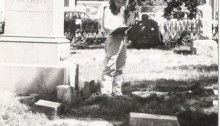Teaching Through Discomfort
“This is a class that will make you uncomfortable.” That’s something I say on the first day in my intro U.S. History courses. I frontload this idea about getting used to discomfort not to warn or scare off students, but to establish a core part of my teaching philosophy and to let my students know…










